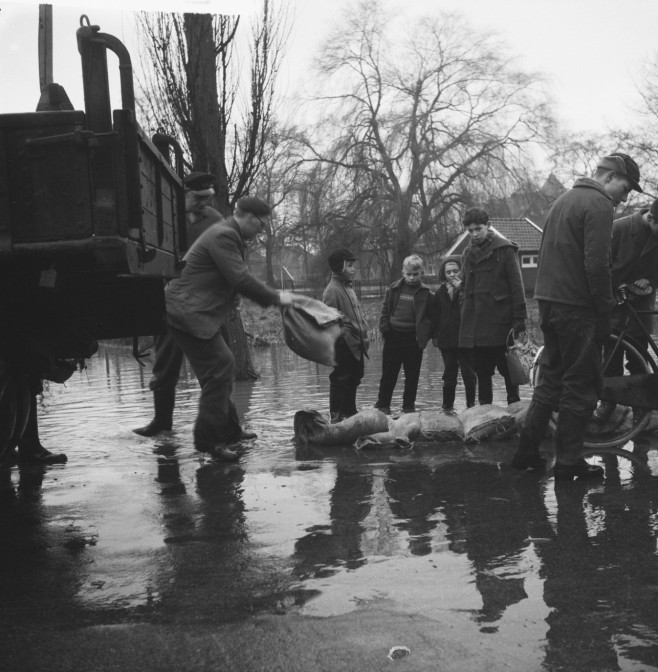“My family tree is safe, I use Dropbox.” Such cloud solutions, that automatically stores files online, are popular among genealogists. You don’t have to remember to make a copy and can access the files from all your computers, tablets and phones. Your files are safe. Are they?
Ensuring future accessibility of your files requires two things: the file must be available, and you must be able to open it.
One problem with cloud solutions like Dropbox is that they do not make a back-up but synchronize, which ensures that the files in all locations are identical. Deleting a file on your computer will also delete it from the digital storage in the cloud and other synchronized gadgets. Retrieving deleted files is not always possible, or only if you had a paid subscription at the time of deletion.

Protecting property by putting down sandbags. Credits: Wim van Rossem, collection Nationaal Archief (CC-BY-SA)
To keep files safe, 3-2-1 is a good strategy: make at least three copies, on at least two different types of storage media, of which at least one is in a different geographical location. For example: store your files on the hard drive of your computer, on an external hard drive and on an online backup location. Or copy them to a USB drive and give it to a family member. Make sure to copy to new storage media on a regular basis, because disks can break down and your new computer may not be able to read them anymore (who can read 5¼” disks anymore?).
A good 3-2-1 strategy will ensure your files are there. Then the next challenge presents itself: can you still open the files? Those of you who ever tried to open a 1980s WordPerfect file know that isn’t easy. That is because like storage media, file formats age too. Many file formats only work with the software of a specific vendor, often with a specific version.
If that software does not work on your new computer, those files can be impossible to open. You can prevent this by creating a copy in an open file format. Well-known open formats are TXT (for text files), PDF (for documents, recent versions of the standard only), TIFF (for images) and GEDCOM (for genealogical databases). Files in an open format can be opened in different programs, so you are not depending on one supplier. Some data may be lost in conversion, for example if a software vendor added custom fields to a genealogy program which are not supported by the GEDCOM standard.
I’m sorry to say that there is no easy solution. But if we take the time to think about future access when we save our files, we can avoid the greatest pitfalls.


Such good advice. I have three copies on two different media, but they are all kept in the same geographic location. I also have concerns about how to store/archive family photographs. Reproduction of scanned images can lead to lose of detail IF the images are not stored in the correct format.
I have even lost transcribed text documents because I upgraded to a new version of the word processing program — on the same computer and the same operating system — that could not open the old files….